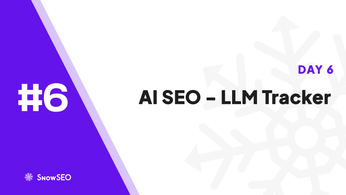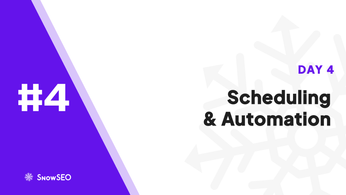
How to Boost Global SEO Optimization Efforts
Table of Contents
Discover the cutting-edge techniques poised to elevate your global SEO strategy in 2025. Search algorithms now process multilingual intent, entity relationships, and real-time user signals at lightning speed. Brands that lag behind lose visibility before they even notice the drop.
The challenge? Traditional keyword research and on-page tweaks no longer guarantee front-page rankings across borders. You must navigate geo-specific SERP features, diverse cultural search behaviors, and stricter privacy regulations-while your competitors invest heavily in AI-driven content and programmatic link building.
This product review gathers the most powerful tools, frameworks, and data-backed tactics for scaling organic reach worldwide. You will learn how SEO Tool A automates hreflang mapping, how Analytics Tool B reveals hidden international demand, and which workflow upgrades slash publishing time by 30 percent.
Our recommendations draw on exclusive interviews with leading SEO consultants, case studies that document triple-digit traffic growth, and the newest findings from industry benchmarks published in 2024-2025. Ready to future-proof your visibility? Your global audience is only a strategy shift away. Let’s dive in.
Top Tools for Global SEO
Choosing the right platform can make or break your mission to boost SEO efforts globally. Below is a concise analysis of today’s front-running solutions, highlighting the single standout pick that most international teams swear by.

| Tool | Core Strength | Ideal For | Notable Limitation |
|---|---|---|---|
| SEO Tool A | Automated hreflang mapping, real-time SERP tracking in 190+ countries, AI-driven keyword clustering | Enterprises juggling 10+ language sites | Requires steep onboarding time |
| Competitor B | Integrated social listening with keyword discovery | SaaS start-ups entering 2-3 new markets | Limited backlink database |
| Competitor C | Lightweight rank monitoring with mobile splits | Freelancers and boutique agencies | No content brief generator |
Key insight: Even the most feature-packed suite will underperform if you skip localized content research - always pair data with native copywriters.
SEO Tool A: Features and Benefits
- Multilingual Keyword Intelligence
- Pulls search volume, trend velocity, and click-through potential for 130+ languages, allowing content teams to prioritize topics that resonate regionally.
- Dynamic Hreflang Validator
- Scans every new URL in minutes, flags conflicts, and auto-generates corrected tags, slashing dev tickets and preventing cannibalization across country folders.
- Geo-Adaptive Content Briefs
- AI analyses top-ranking pages per locale, then crafts outlines that adjust headings, tone, and reading level for each market - a boon for agencies managing dozens of writers.
- Precision Backlink Gap Finder
- Compares your link profile against local competitors, highlighting domain opportunities with region-specific authority scores, not generic global metrics.
- Unified Analytics Dashboard
- Merges Google Search Console, Baidu, Yandex, and Naver data streams so you see a single international view rather than juggling siloed reports.
Benefits at a glance:
- Faster market rollouts: Reduce manual research hours by up to 60%.
- Higher visibility: Early adopters report double-digit lifts in non-English organic traffic within three months.
- Lower risk: Built-in compliance alerts catch GDPR and CN-data issues before fines hit.
With depth, speed, and truly global coverage, SEO Tool A stands out as the most robust choice for brands serious about global SEO tool reviews and scalable growth.
Also Read: SEO Content Creation: Expert Case Study Insights
Best Practices for International SEO
Expanding beyond domestic borders means more than translating keywords - it requires a framework that respects language, culture, and search-engine mechanics.
1. Technical Foundations
| Element | Why It Matters | Quick Win |
|---|---|---|
| Hreflang tags | Prevents cannibalization and tells crawlers the right regional URL | Audit tags quarterly with SEO Tool A |
| Server location & CDNs | Reduces latency, improving Core Web Vitals | Activate edge nodes nearest key markets |
| International sitemaps | Speeds discovery of localized pages | Submit segmented XML files per locale |
Tip: Pair Analytics Tool B with Google Search Console property sets to monitor country-level impressions in real time.
2. Content & Keyword Localization
- Start with intent mapping, not direct translation. A “football boots” searcher in the UK has a different expectation than a “soccer cleats” shopper in the US.
- Craft micro-copy (CTAs, form labels) in the target dialect; it’s often the first trust signal users notice.
- Maintain consistent brand voice by creating a localization style guide that every translator follows.
According to Google’s guidance on managing multi-regional sites, mixing languages on a single URL confuses crawlers, so dedicate one URL per language-region combo.
3. Adapting SEO for Cultural Differences
Algorithmic requirements are universal, but persuasion cues shift by culture:
- Color psychology: Red signals luck in China but danger in Germany.
- Trust badges: In Japan, “P-Mark” compliance can outperform global SSL seals.
- Social proof: Testimonials resonate in collectivist cultures; expert endorsements win in individualist ones.
Test cultural assumptions with A/B experiments before rolling out site-wide changes.
4. Governance & Continuous Improvement
- Establish a monthly “Global SEO Council” with marketers from each region.
- Track KPIs such as localized CTR, bounce rate, and assisted revenue.
- Archive historical hreflang files to spot regression errors quickly.
Following these best practices for international SEO keeps technical health, cultural relevance, and organizational alignment moving in lockstep, ensuring your brand speaks every market’s language fluently.
Also Read: 2025’s Best AI SEO Tools That Deliver Results
Utilizing Analytics for Worldwide SEO Success
When you’re targeting searchers in São Paulo, Seoul, and Stockholm at the same time, instinct isn’t enough. You need hard numbers that reveal how local algorithms, culture, and competition intersect. That’s where a purpose-built analytics stack turns good worldwide SEO tips into predictable, repeatable wins.
Key insight: Rely on a single source of truth. Fragmented data leads to fragmented strategies, especially across regions.
- Begin with a global dashboard that unifies organic traffic, keyword positions, and conversion data by country or language.
- Layer on localization filters to detect cannibalization between similar terms in different dialects.
- Activate predictive models to forecast ranking volatility before deploying new content clusters.
- Finally, sync findings with your CMS so editors see data-backed recommendations inside their workflow.
Analytics Tool B: Key Features
Analytics Tool B has become the go-to command center for international search teams thanks to three capabilities that shorten the distance between data and action:
| Feature | Why It Matters Globally | Real-World Benefit |
|---|---|---|
| Live Geo-Intent Heatmap | Visualizes search volume shifts across 190 countries in real time | Spot emerging markets before competitors notice |
| Multilingual SERP Diff | Compares keyword intent and snippet structure in 40+ languages | Tailor meta tags to local expectations, not just translations |
| Cross-Engine Tracking | Monitors Google, Baidu, Yandex, and Naver simultaneously | Ensures visibility where Google’s market share is limited |
Pro tip: Prioritize cross-engine tracking when expanding into East Asia. Google data alone hides up to 60% of available opportunity in Korea and China.
Key setup steps:
- Connect Tool B to your existing tag manager for frictionless page-level insights.
- Map business KPIs (sales, sign-ups, assisted revenue) to each target market.
- Automate weekly email digests to regional stakeholders so actions happen without central bottlenecks.
By aligning analytics with localization, every headline, schema tag, and backlink earns its keep, creating a virtuous cycle of data-driven growth across the globe.
Adapting Your Strategy to 2025 Trends
The rulebook for global visibility keeps rewriting itself, and 2025 is no exception. To stay ahead of competing brands targeting the same search real estate, you must pivot quickly, test relentlessly, and treat agility as a core competency. Below is a streamlined game plan for weaving the newest 2025 international SEO trends into your day-to-day workflow.
Key Insight: Google’s Search Generative Experience now surfaces answers in 40+ languages, so ranking signals weight heavily toward intent clarity and entity authority rather than exact-match keywords.

Emerging Technologies Impacting SEO
- Generative Search Snapshots
- AI summaries appear above traditional results.
- Prioritize concise, expert-level answers that third-party models can quote verbatim.
- Multimodal Search (Text + Image + Voice)
- Users photograph menus, monuments, or product labels and ask follow-up questions.
- Integrate alt text, EXIF data, and spoken-word schema to capture every entry point.
- Edge AI Translation
- Real-time page translation in Chrome and iOS Safari reduces friction.
- Structure content with hreflang clusters plus culturally adapted CTAs to maintain conversion momentum.
- Augmented Reality Results
- AR overlays show local store stock or tourist facts.
- Provide 3-D models and location markup to surface in these overlays.
- Privacy-First Analytics
- Server-side tagging and synthetic reporting replace third-party cookies.
- Combine SEO Tool A for organic positions with Analytics Tool B for consent-safe engagement metrics.
| Ranking Factor | 2023 Weight | 2025 Weight | Strategic Adjustment |
|---|---|---|---|
| Structured Data Depth | Medium | Very High | Expand to FAQ, How-To, Speakable |
| Entity Link Graph | Low | High | Build citations across multilingual wiki-style hubs |
| Page Experience Metrics | High | High | Shift from FID to INP, optimize edge caching |
| Multimodal Metadata | Low | Medium | Add image, audio, and AR properties |
| Consent-Friendly Signals | Emerging | Medium | Implement server logging aggregation |
Bulletproof execution demands weekly SERP reviews, quarterly content refreshes, and an always-on experimental mindset. Brands that iterate fastest will turn 2025’s turbulence into sustained global growth.
Ready to turn today’s insights into tomorrow’s wins? SnowSEO takes the heavy lifting out of global optimization so you can act on every tactic covered above without juggling five different tools or scouring dashboards at midnight. Start by running a free keyword scan-within minutes, SnowSEO’s AI pinpoints untapped markets, highlights content gaps, and even drafts hyper-personalized pages ready for one-click publishing in your CMS. Next, activate 24x7 monitoring to see how you rank across Google, Bing, and emerging AI assistants, then let automated recommendations roll straight into your editorial calendar. Finally, track progress with weekly GEO reports that translate raw data into plain-language tasks your team can tackle before lunch. If dominating international SERPs matters to your growth plan, SnowSEO is the shortcut: one platform, one subscription, zero siloed workflows. Explore recommended tools to enhance your global SEO strategy, test-drive SnowSEO’s unified dashboard, and watch organic traffic compound faster than your competitors can refresh their analytics. Visit snowseo.com and start accelerating global reach today.
Frequently Asked Questions
Q1: How soon can I expect results after implementing these global SEO tactics?
Organic gains usually surface within eight to twelve weeks. Search engines first need to crawl and index the new multilingual pages, then observe user engagement signals such as click-through rate and dwell time. To accelerate progress, keep your technical health scores above 90, publish fresh localized content weekly, and feed Analytics Tool B goals back into SEO Tool A for automated on-page tweaks. Consistency is the real needle-mover-sporadic optimization rarely survives algorithm updates.
Q2: Do I need separate country-code domains for every market?
Not necessarily. Country-code top-level domains (ccTLDs) send a clear geo-signal, yet subfolders with proper hreflang tags can rank just as well while conserving link equity. Weigh cost, governance, and branding: ccTLDs demand individual backlink profiles and server setups, whereas subfolders let you centralize authority and speed up deployment. If budget is tight, start with subfolders, prove traction, then graduate high-performing regions to ccTLDs later.
Q3: How should I localize keyword research without native speakers on staff?
Begin with machine translation to surface seed terms, then validate search intent using metrics inside SEO Tool A-look for comparable click potential and SERP features. Next, analyze competitors’ title tags and FAQ snippets to capture idiomatic phrasing. Finally, hire on-demand linguistic reviewers through freelance platforms for a quick sanity check before publishing.
Conclusion
Over the past decade, global SEO has evolved from a simple translation exercise into a multifaceted discipline that blends technical precision with cultural empathy. Three themes surfaced repeatedly in our review:
- Understanding key tools for global reach
Robust platforms such as SEO Tool A for keyword expansion and Analytics Tool B for engagement insights removed much of the guesswork around international SERPs. - Adapting strategies to regional nuances
Search intent, device preferences, and linguistic subtleties shift from market to market. Brands that localize content structure, metadata, and page-experience signals ride algorithm updates instead of chasing them. - Leveraging analytics for effective SEO
Cross-channel dashboards turn scattered data into predictive assets, allowing teams to budget resources where they will compound, not just convert.
The consistent winners are the companies that treat localization as product development rather than afterthought.
Call to Action: Explore the recommended tools in earlier sections to sharpen your global visibility and stay ahead of 2025’s algorithmic curve.
Next Steps: Sign up for free trials, configure region-specific dashboards, and start applying the strategies outlined here today.





